标签:应用 需要 初始 空闲 进程间 直接 有一个 相关 原因
参考上面的学习总结模板,把学习过程通过博客(随笔)发表,博客标题“学号 《信息安全系统设计基础》第十三周学习总结”,博客(随笔)要通过作业提交,截至时间本周日 23:59。
因为套接字的文件表表项中的引用计数,直到父子进程的connfd都关闭了,到客户端的连接才会终止。
使用显式的进程间通信(IPC)机制。但开销很高,往往比较慢。
int select(int n,fd_set *fdset,NULL,NULL,NULL); 返回已经准备好的描述符的非0的个数,若出错则为-1。bn-1,......,b1,b0用FD_ZERO,FD_SET,FD_CLR和FD_ISSET宏指令来修改和检查他们。
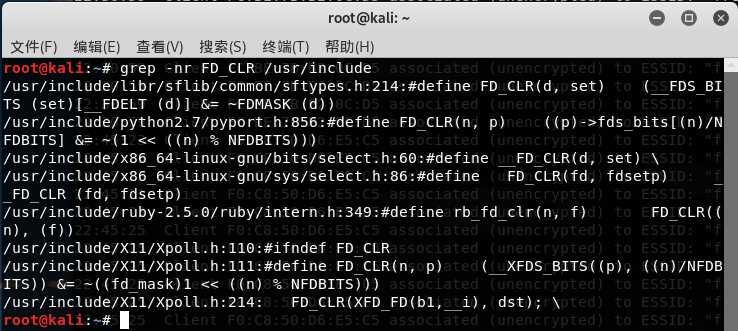
自循环:同一输入和输出状态之间的转移。
编码复杂,随着并发粒度的减小,复杂性还会上升。粒度:每个逻辑流每个时间片执行的指令数量。
线程:运行在进程上下文中的逻辑流,由内核自动调度,有自己的线程上下文,包括一个唯一的整数线程ID,栈、栈指针、程序计数器、通用目的寄存器和条件码。所有运行在一个进程里的线程共享该进程的整个虚拟地址空间。
每个进程开始生命周期时都是单一线程,这个线程称为主线程 (main thread)。在某一时刻,主线程创建一个对等线程 (peer thread),从这个时间点开始,两个线程就并发地运行。最后,因 为主线程执行一个慢速系统调用。或者因为它被系统的间隔计时器中断, 控制就会通过上下文切换传递到对等线程。对等线程会执行一段时间,然后控制传递回主线程,依次类推。
线程的代码和本地数据被封装在一个线程例程中。
int pthread_create(pthread_t *tid,pthread_attr_t *attr,func *f,void *arg); 成功则返回0,出错则为非零当函数返回时,参数tid包含新创建的线程的ID,新线程可以通过调用pthread_self函数来获得自己的线程ID。
pthread_t pthread_self(void);返回调用者的线程ID。
通过调用pthread_exit函数,线程会显式地终止void pthread_exit(void *thread_return);
线程通过调用pthread_join函数等待其他线程终止。
int pthread_join(pthread_t tid,void **thread_return); 成功则返回0,出错则为非零
在任何一个时间点上,线程是可结合或可分离的。一个可结合的线程能够被其他线程收回其资源和杀死,在被回收之前,它的存储器资源是没有被释放的。分离的线程则相反,资源在其终止时自动释放。
int pthread_deacth(pthread_t tid); 成功则返回0,出错则为非零
pthread_once允许初始化与线程例程相关的状态。
pthread_once_t once_control=PTHREAD_ONCE_INIT; int pthread_once(pthread_once_t *once_control,void (*init_routine)(void)); 总是返回0
第一步:服务器接受客户端的连接请求:

父进程为客户端 1 创建了子进程之后,它接受一个新的客户端 2 的连接请求, 并返回一个新的已连接描述符(比如描述符5),然后,父进程又派生另一个子进程,这个子进程用已连接描述符 5 为它的客户端提供服务。
此时,父进程正在等待下一个连接请求,而两个子进程正在并发地为它们各自的客户端提供服务。
第二步:服务器派生一个子进程为这个客户端服务:
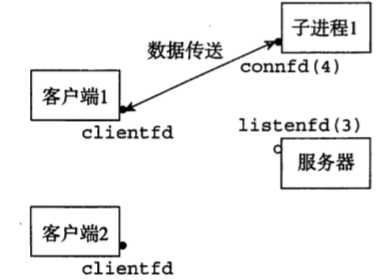
第三步:服务器接受另一个连接请求:

一个变量是共享的。当且仅当多个线程引用这个变量的某个实例。
各自独立的线程栈被保存在虚拟地址空间的栈区域中,并且通常是被相应的线程独立地访问的。
本地静态变量:定义在函数内部并有static属性的变量。
当且仅当变量的一个实例被一个以上的线程引用时,就说变量是共享的。
共享变量的同时引入了同步错误,即没有办法预测操作系统是否为线程选择一个正确的顺序。
将n个并发线程的执行模型化为一条n维笛卡尔空间中的轨迹线,将指令模型化为从一种状态到另一种状态的转换。
int sem_init(sem_t *sem,0,unsigned int value);//将信号量初始化为value int sem_wait(sem_t *s);//P(s) int sem_post(sem_t *s);//V(s)
禁止区:s<0,因为信号量的不变性,没有实际可行的轨迹线能够直接接触不安全区的部分
并行程序的加速比通常定义为:
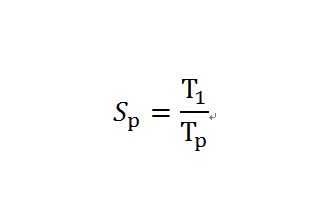
其中,p为处理器核的数量,T为在p个核上的运行时间。
可重入函数、线程安全函数和线程不安全函数之间的集合关系:

我们总是使用术语可重入的 (reenntrant) 既包括显式可重入函数也包括隐式可重入函数。然而,认识到可重入性有时既是调用者也是被调用者的属性,并不只是被调用者单独的属性是非常重要的。
调用线程不安全函数的函数。
为消除竞争,我么可以动态地为每个整数ID分配一个独立的块,并且传递给线程例程一个指向这个块的指针。
互斥锁加锁顺序规则:如果对于程序中每对互斥锁(s,t),给所有的锁分配一个全序,每个线程按照这个顺序来请求锁,并且按照逆序来释放,这个程序就是无死锁的。
答:当父进程派生子进程是,它得到一个已连接描述符的副本,并将相关文件表中的引用计数从1增加到2.当父进程关闭他的描述符副本时,引用计数从2减少到1.因为内核不会关闭一个文件,直到文件表中他的应用计数值变为0,所以子进程这边的连接端将保持打开
答:会导致select函数但会,准备好的集合中有描述符0
答:因为pool.ready_set即作为输入参数也作为输出参数,所以在每一次调用select前都重新初始化他。输入时,他包含读集合,在输出,它包含准备好的集合
答:因为线程运行在同一个进程中,他们共享同一个描述符表,所以在描述符表中的引用计数与线程的多少是没有关系的都为1,因此只需要一个close就够了。
A.p =1,c =1,n>1
B.p =1,c=1,n=1
C.p>1,c>1,n=1#include <stdio.h>
#include "csapp.h"
void *thread(void *vargp);
#define DEFAULT 4
int main(int argc, char* argv[]) {
int N;
if (argc > 2)
unix_error("too many param");
else if (argc == 2)
N = atoi(argv[1]);
else
N = DEFAULT;
int i;
pthread_t tid;
for (i = 0; i < N; i++) {
Pthread_create(&tid, NULL, thread, NULL);
}
Pthread_exit(NULL);
}
void *thread(void *vargp) {
printf("Hello, world\n");
return NULL;
}#include "csapp.h"
void *thread(void *vargp);
int main()
{
pthread_t tid;
Pthread_create(&tid, NULL, thread, NULL);
// exit(0);
Pthread_exit(NULL);
}
/* Thread routine */
void *thread(void *vargp)
{
Sleep(1);
printf("Hello, world!\n");
return NULL;
}#include <stdlib.h>
#include <pthread.h>
#include <stdlib.h>
typedef struct _msg{
struct _msg * next;
int num;
} msg;
msg *head;
pthread_cond_t has_product = PTHREAD_COND_INITIALIZER;
pthread_mutex_t lock = PTHREAD_MUTEX_INITIALIZER;
void *consumer ( void * p )
{
msg * mp;
for( ;; ) {
pthread_mutex_lock( &lock );
while ( head == NULL )
pthread_cond_wait( &has_product, &lock );
mp = head;
head = mp->next;
pthread_mutex_unlock ( &lock );
printf( "Consume %d tid: %d\n", mp->num, pthread_self());
free( mp );
sleep( rand() % 5 );
}
}
void *producer ( void * p )
{
msg * mp;
for ( ;; ) {
mp = malloc( sizeof(msg) );
pthread_mutex_lock( &lock );
mp->next = head;
mp->num = rand() % 1000;
head = mp;
printf( "Produce %d tid: %d\n", mp->num, pthread_self());
pthread_mutex_unlock( &lock );
pthread_cond_signal( &has_product );
sleep ( rand() % 5);
}
}
int main(int argc, char *argv[] )
{
pthread_t pid1, cid1;
pthread_t pid2, cid2;
srand(time(NULL));
pthread_create( &pid1, NULL, producer, NULL);
pthread_create( &pid2, NULL, producer, NULL);
pthread_create( &cid1, NULL, consumer, NULL);
pthread_create( &cid2, NULL, consumer, NULL);
pthread_join( pid1, NULL );
pthread_join( pid2, NULL );
pthread_join( cid1, NULL );
pthread_join( cid2, NULL );
return 0;
}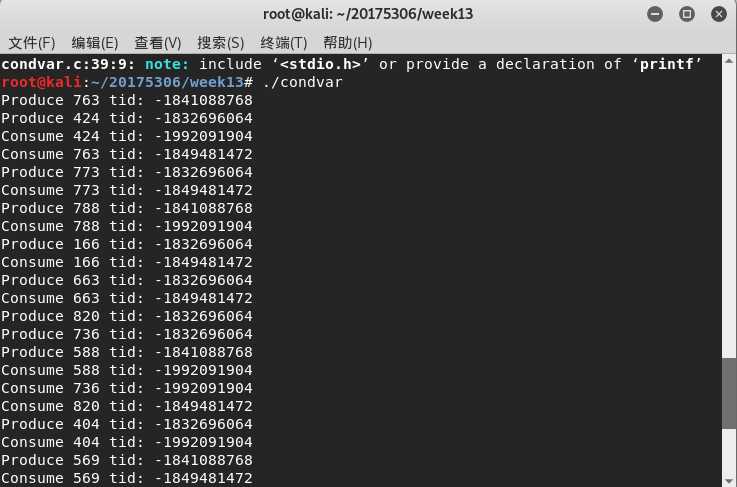
mutex用于保护资源,wait函数用于等待信号,signal函数用于通知信号,wait函数中有一次对mutex的释放和重新获取操作,因此生产者和消费者并不会出现死锁。
#include <stdio.h>
#include <string.h>
#include <stdlib.h>
#include <pthread.h>
#include <unistd.h>
pthread_t ntid;
void printids( const char *s )
{
pid_t pid;
pthread_t tid;
pid = getpid();
tid = pthread_self();
printf("%s pid %u tid %u (0x%x) \n", s , ( unsigned int ) pid,
( unsigned int ) tid, (unsigned int ) tid);
}
void *thr_fn( void * arg )
{
printids( arg );
return NULL;
}
int main( void )
{
int err;
err = pthread_create( &ntid, NULL, thr_fn, "new thread: " );
if ( err != 0 ){
fprintf( stderr, "can't create thread: %s\n", strerror( err ) );
exit( 1 );
}
printids( "main threads: " );
sleep(1);
return 0;
}
打印进程和线程ID
#include <stdio.h>
#include <stdlib.h>
#include <pthread.h>
#include <unistd.h>
char buf[BUFSIZ];
void *thr_fn1( void *arg )
{
printf("thread 1 returning %d\n", getpid());
printf("pwd:%s\n", getcwd(buf, BUFSIZ));
*(int *)arg = 11;
return (void *) 1;
}
void *thr_fn2( void *arg )
{
printf("thread 2 returning %d\n", getpid());
printf("pwd:%s\n", getcwd(buf, BUFSIZ));
pthread_exit( (void *) 2 );
}
void *thr_fn3( void *arg )
{
while( 1 ){
printf("thread 3 writing %d\n", getpid());
printf("pwd:%s\n", getcwd(buf, BUFSIZ));
sleep( 1 );
}
}
int n = 0;
int main( void )
{
pthread_t tid;
void *tret;
pthread_create( &tid, NULL, thr_fn1, &n);
pthread_join( tid, &tret );
printf("n= %d\n", n );
printf("thread 1 exit code %d\n", (int) tret );
pthread_create( &tid, NULL, thr_fn2, NULL);
pthread_join( tid, &tret );
printf("thread 2 exit code %d\n", (int) tret );
pthread_create( &tid, NULL, thr_fn3, NULL);
sleep( 3 );
pthread_cancel(tid);
pthread_join( tid, &tret );
printf("thread 3 exit code %d\n", (int) tret );
}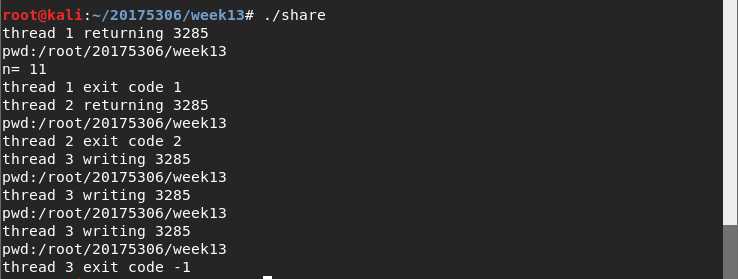
获得线程的终止状态,thr_fn 1,thr_fn 2和thr_fn 3三个函数对应终止线程的三种方法,即从线程函数return,调用pthread_exit终止自己和调用pthread_cancel终止同一进程中的另一个线程。
#include <stdio.h>
#include <stdlib.h>
#include <pthread.h>
#define NLOOP 5000
int counter;
pthread_mutex_t counter_mutex = PTHREAD_MUTEX_INITIALIZER;
void *doit( void * );
int main(int argc, char **argv)
{
pthread_t tidA, tidB;
pthread_create( &tidA ,NULL, &doit, NULL );
pthread_create( &tidB ,NULL, &doit, NULL );
pthread_join( tidA, NULL );
pthread_join( tidB, NULL );
return 0;
}
void * doit( void * vptr)
{
int i, val;
for ( i=0; i<NLOOP; i++ ) {
pthread_mutex_lock( &counter_mutex );
val = counter++;
printf("%x: %d \n", (unsigned int) pthread_self(), val + 1);
counter = val + 1;
pthread_mutex_unlock( &counter_mutex );
}
return NULL;
}
引入互斥锁(Mutex),获得锁的线程可以完成”读-修改-写”的操作,然后释放锁给其它线程,没有获得锁的线程只能等待而不能访问共享数据。
#include <stdio.h>
#include <pthread.h>
#include <stdlib.h>
#include <semaphore.h>
#define NUM 5
int queue[NUM];
sem_t blank_number, product_number;
void *producer ( void * arg )
{
static int p = 0;
for ( ;; ) {
sem_wait( &blank_number );
queue[p] = rand() % 1000;
printf("Product %d \n", queue[p]);
p = (p+1) % NUM;
sleep ( rand() % 5);
sem_post( &product_number );
}
}
void *consumer ( void * arg )
{
static int c = 0;
for( ;; ) {
sem_wait( &product_number );
printf("Consume %d\n", queue[c]);
c = (c+1) % NUM;
sleep( rand() % 5 );
sem_post( &blank_number );
}
}
int main(int argc, char *argv[] )
{
pthread_t pid, cid;
sem_init( &blank_number, 0, NUM );
sem_init( &product_number, 0, 0);
pthread_create( &pid, NULL, producer, NULL);
pthread_create( &cid, NULL, consumer, NULL);
pthread_join( pid, NULL );
pthread_join( cid, NULL );
sem_destroy( &blank_number );
sem_destroy( &product_number );
return 0;
}
semaphore表示信号量,semaphore变量的类型为sem_t,sem_init()初始化一个semaphore变量,value参数表示可用资源 的数量,pshared参数为0表示信号量用于同一进程的线程间同步。
#include <stdio.h>
#include <stdlib.h>
#include <pthread.h>
#define NLOOP 5000
int counter;
void *doit( void * );
int main(int argc, char **argv)
{
pthread_t tidA, tidB;
pthread_create( &tidA ,NULL, &doit, NULL );
pthread_create( &tidB ,NULL, &doit, NULL );
pthread_join( tidA, NULL );
pthread_join( tidB, NULL );
return 0;
}
void * doit( void * vptr)
{
int i, val;
for ( i=0; i<NLOOP; i++ ) {
val = counter++;
printf("%x: %d \n", (unsigned int) pthread_self(), val + 1);
counter = val + 1;
}
}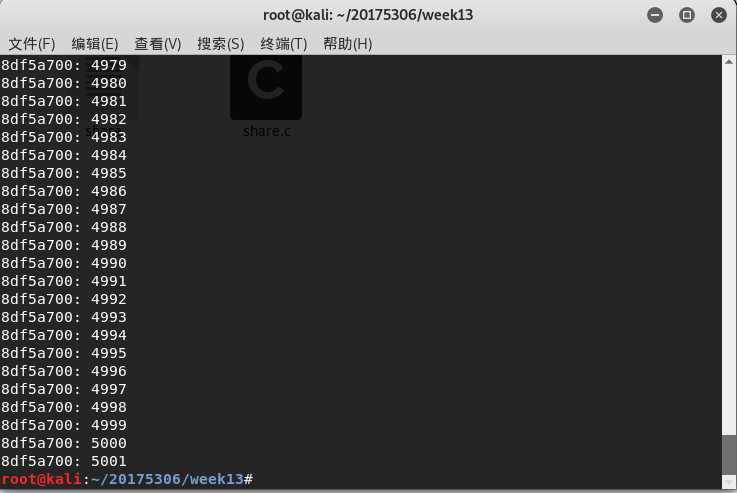
标签:应用 需要 初始 空闲 进程间 直接 有一个 相关 原因
原文地址:https://www.cnblogs.com/wjs123456/p/12079584.html